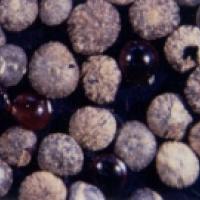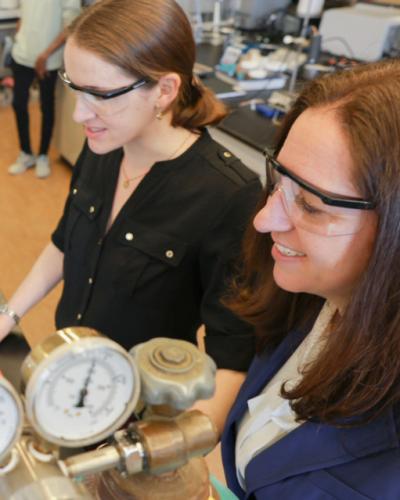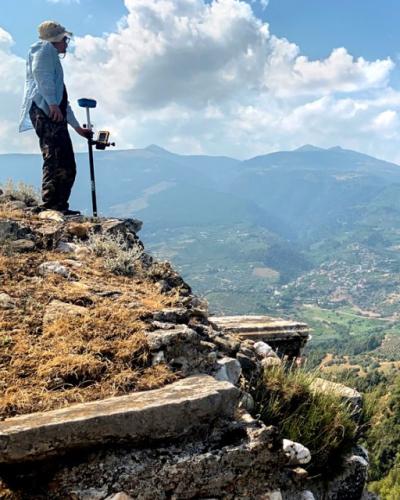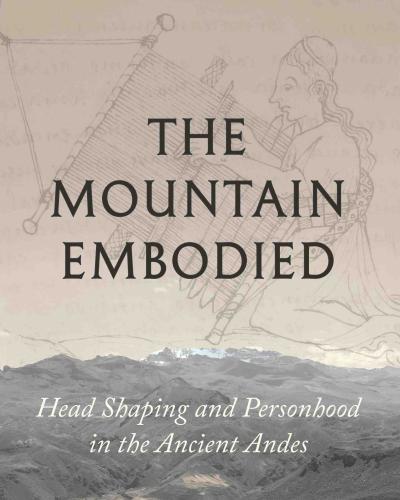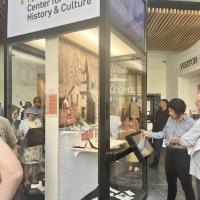Medieval Studies PhD candidate Alice Wolff teamed up with scientists from CALS to publish a new open-access review article in Weed Science this past February titled, “In the ruins: the neglected link between archaeology and weed science.” Antonio DiTommaso, Professor of Weed Science and Chair of the Soil and Crop Sciences Section in the School of Integrative Plant Science, and Sophie Westbrook, a graduate student in Prof. DiTommaso’s program, coauthored the article with Wolff.
The article aims to build a bridge between archaeobotany – the study of plant remains from archaeological contexts – and scientists who study the modern weeds that grow alongside and interfere with agricultural crops. The idea for the article came when Wolff was taking a 2019 CALS seminar course, Ecology of Agricultural Systems, and realized that plant scientists were largely unaware of the contributions archaeobotanists were making to weed ecology.
Common lambsquarters (Chenopodium album L.) - a weed commonly found on the types of archaeological sites that Wolff studies - infesting cabbage. Photo by A. DiTommaso.
DiTommaso’s surprise when Wolff invited him to join her PhD special committee confirmed Wolff’s suspicions. But DiTommaso quickly became as convinced as Wolff that his field needed to know about archaeobotany.
At DiTommaso’s suggestion, Wolff workshopped her article draft in his Weed Ecology and Management graduate course (Spring 2021), where Sophie Westbrook joined the project. For Wolff, working with DiTommaso, Westbrook, and the students in the graduate course was about finding the best expertise available in modern weed science to inform her research into the weeds of the past.
“I specifically wanted to do that research supervised by someone familiar with weed science methods, to make sure I was going in the right direction,” said Wolff. "I really wanted to familiarize myself with how functional weed ecology was used in archaeology.”
Functional weed ecology is just one of the aspects of cross-pollination between archaeobotany and weed ecology that the article highlights. This approach examines how different crop management practices (such as irrigation) or local environments – give rise to distinctive combinations of weeds. Archaeobotanists can use knowledge of these combinations of weeds in reverse to reconstruct past crop management practices and compare them against records of climate change in the past. This can inform crop scientists studying the responses of agricultural systems to climate change and the development of more sustainable methods.
Close-up of common lambsquarters (Chenopodium album L.) in its seed form. Archaeobotanists typically find plant remains in the form of carbonized seeds rather than as larger plants. Photo credit: A. DiTommaso
The authors also paid close attention to science communication: knowing that weed ecologists would be unfamiliar with archaeobotany, they dedicated a portion of the article to defining key terminology used by archaeobotanists, and included a list of the major archaeobotany journals. They also paid close attention to clear writing – one of Westbrook’s major contributions. DiTommaso also pushed for the article to be published open-access as a review article, so that it would be widely available to scholars across disciplines.
DiTommaso hopes his colleagues will gain “an appreciation for this other community of scientists that are doing very interesting work that could have significant impacts on how we view future agricultural systems, but learning from the past.” He also hopes that this will be the start of a new relationship between SIPS and archaeologists in A&S – and his hopes are already beginning to bear fruit: SIPS has signed on as a co-sponsor for “Frontiers in Archaeological Sciences 3: Rethinking the Paradigm,” a conference co-hosted by the Archaeological Science Group at Cornell (of which Wolff was the president in 2021), the Cornell Institute of Archaeology and Material Studies (CIAMS), and the CIAMS Anti-racism and Anti-colonialism Interest Group.
In her dissertation, Wolff plans to focus her work on the relationships between humans and the environment in the past, using functional ecology to reconstruct medieval cropping systems while also stepping back and studying the crop scientists of the past – how medieval thinkers thought about what we now label as ‘weeds.’
Wolff said she hopes the article will make archaeologists aware of the rich contributions that the science of modern weeds can offer the study of agriculture in the past.
“So often the weeds are left neglected and understudied in favor of crops,” said Wolff, “but I hope this article demonstrates to archaeobotanists the importance of carefully studying weed remains when trying to understand cropping systems in the past.”


